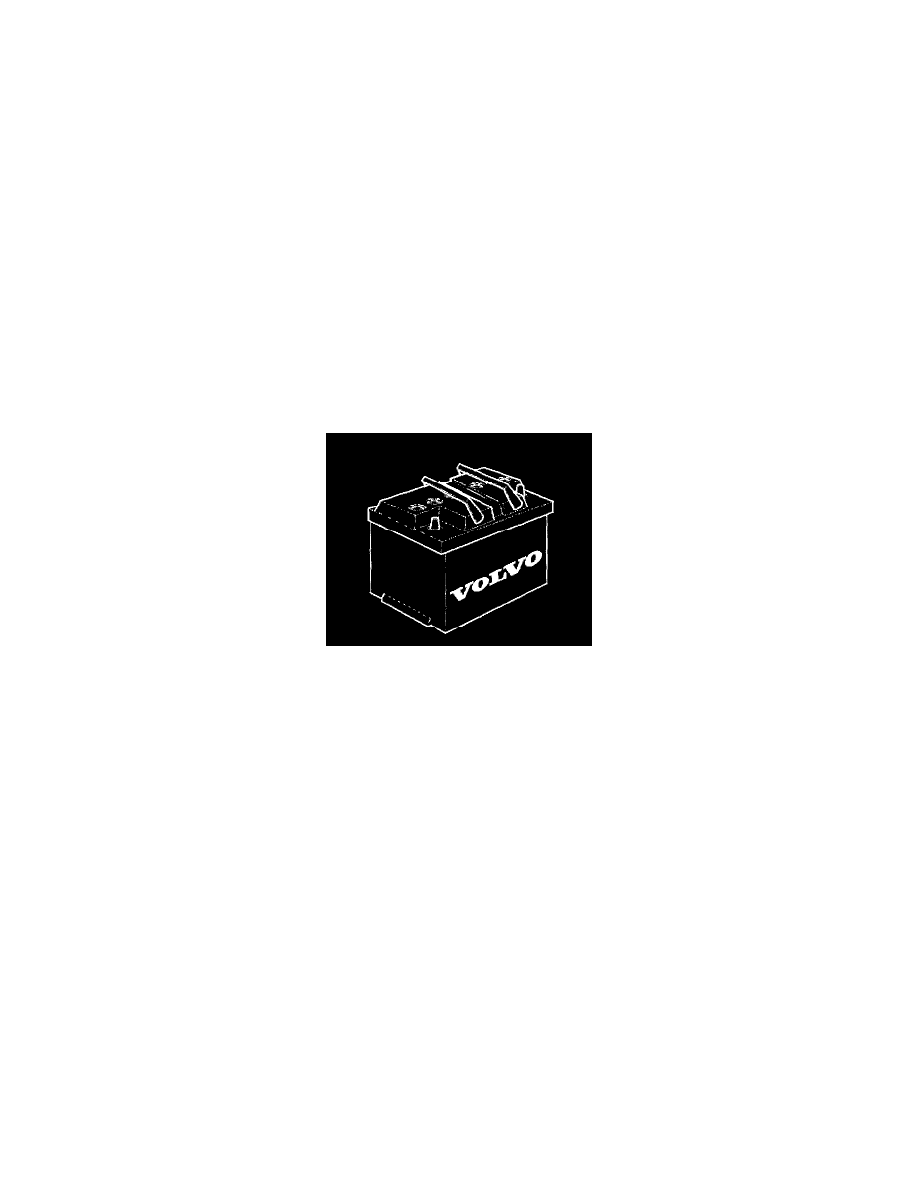V70R AWD L5-2.3L Turbo VIN 62 B5234T8 (1999)

Battery: Testing and Inspection
Fault-Tracing and Testing the Battery
Cleaning and Checking Batteries
Fault-tracing and testing the battery
Note:
As the illustrations in this service information are used for different model years and/or models, some variations may occur. However, the
essential information in the illustrations is always correct.
WARNING: Oxyhydrogen is formed when batteries are being charged. Oxyhydrogen is extremely explosive. Smoking, welding, grinding and
naked flames in the vicinity of the battery may result in the battery exploding causing personal injury and damage to the car. Only
charge the battery in a well ventilated area. Ensure that ventilation is good!
Watch out for acid splash! The battery contains sulfuric acid which can cause serious corrosive damage. If the electrolyte comes
into contact with your eyes, skin or clothes -- flush using large quantities of water. Contact a doctor immediately if acid splashes
into eyes! Use protective goggles when handling batteries.
Cleaning and checking batteries
Cleaning
-
Remove the battery from the car. Always disconnect the negative terminal first to prevent sparking
-
check that the battery is clean. Dirt can cause leakage currents between the battery posts
-
Wash the battery using water. A mild cleaning agent can be used if necessary. Ensure that no dirt or water penetrates any of the cells
-
Wipe clean and dry.
External checks
-
check the battery for signs of the following damage and remedy as necessary:
-
Dirty or loose posts
-
The battery is not secure and is loose in the engine compartment or cargo compartment
-
Worn, oxidized or damaged battery leads.
-
Discard the battery if any of the following faults are found:
-
Cracked container
-
Leakage
-
Bent, loose or damaged terminals
-
Battery damaged by freezing.
-
Reinstall the battery in the car after checking it. Connect the positive terminal first
-
Check that the battery is secure in the engine compartment or cargo compartment.
WARNING: The battery can develop oxyhydrogen, which is highly explosive. Ensure that any evacuation hose (the hose which evacuates
oxyhydrogen from the cargo compartment) is correctly connected to the battery and that the hose leads downwards to the
dedicated outlet in the bodywork.
Checking electrolyte level
Refer to Checking the Electrolyte Level See: Checking the Electrolyte Level
Testing the Battery
